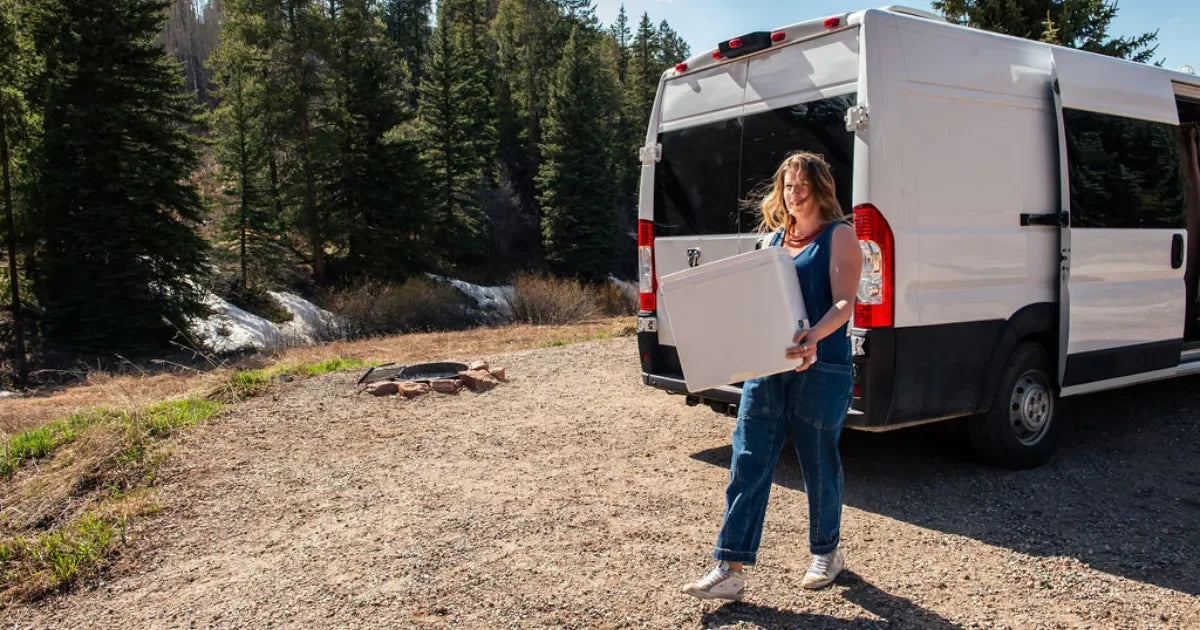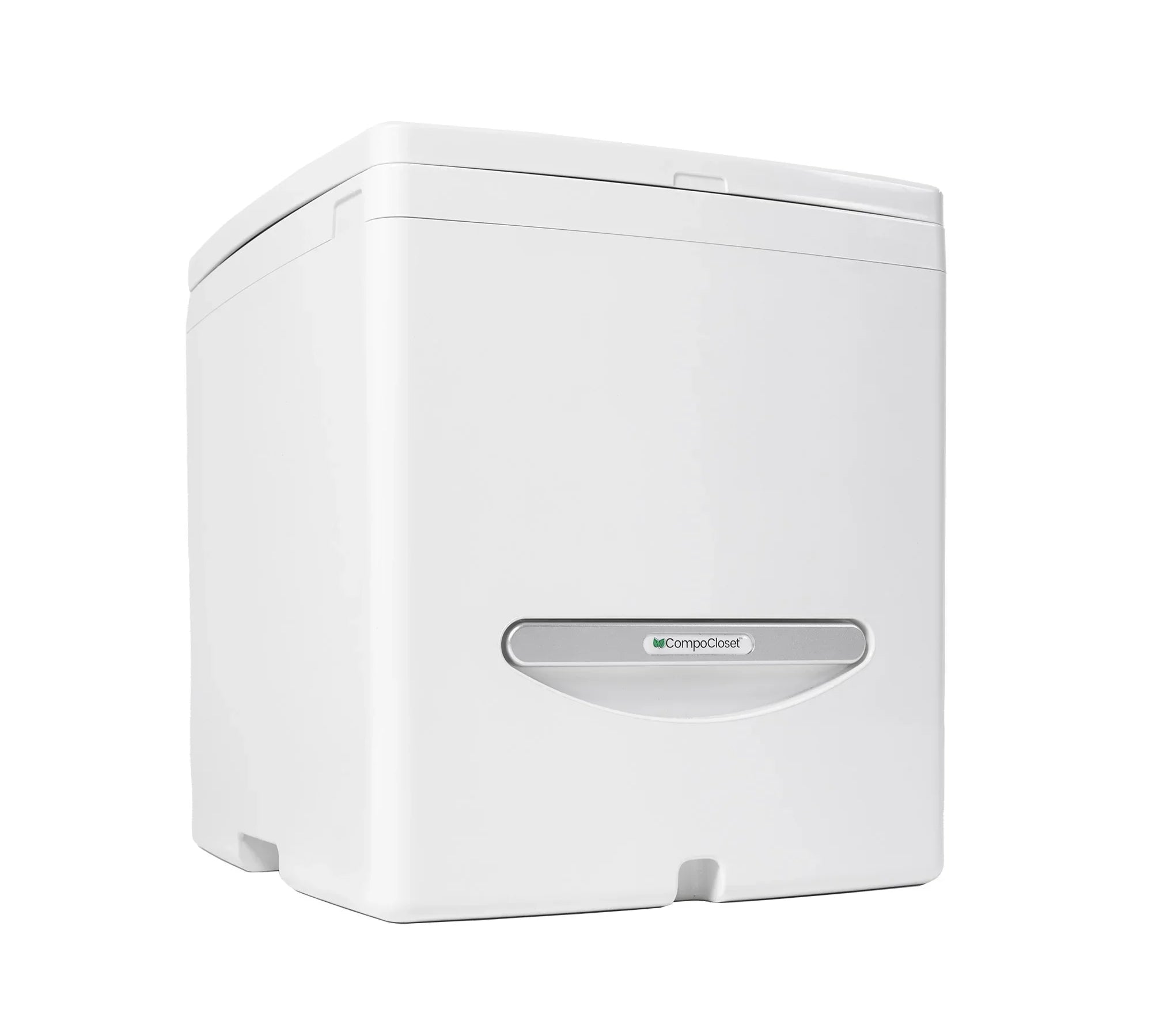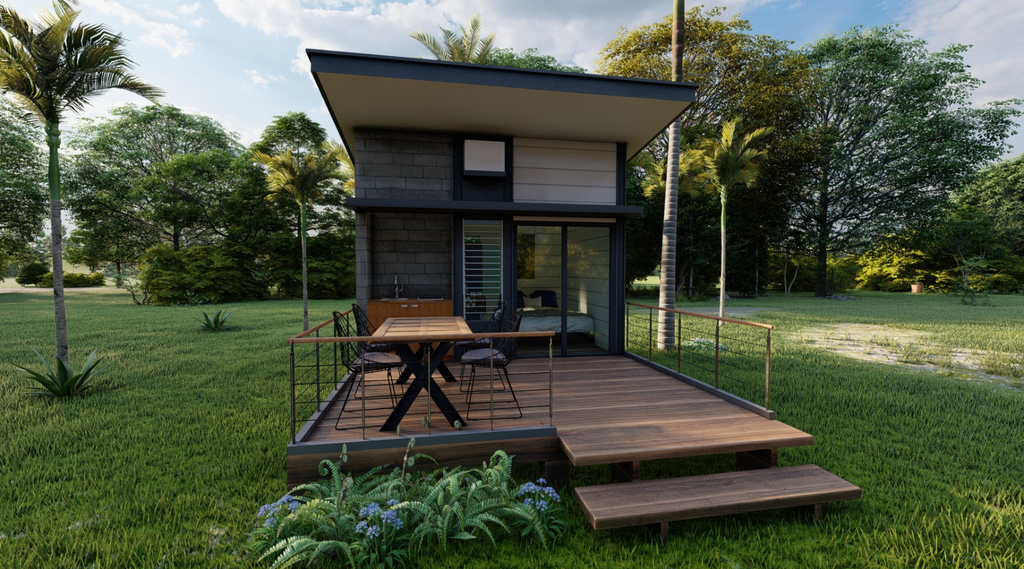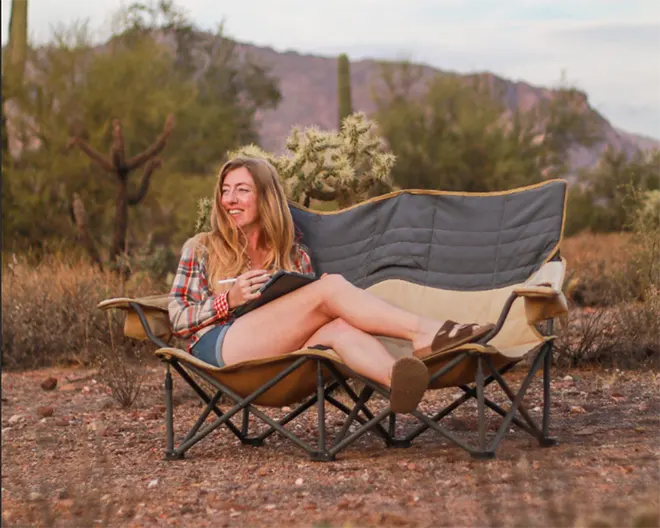If you’ve been researching tiny house composting toilets, you might still be a little skeptical. You want something sustainable and compact, but composting?
Tiny houses have revolutionized the way we think about living spaces, offering a minimalist and eco-friendly alternative to traditional homes. You want your toilet to align with your tiny dreams, and you might be surprised to hear that there are many options when it comes to tiny house toilets.
What's right for one person might not be right for you. So we've put together a guide that will answer all of your questions about composting toilets for tiny homes and help you determine if it’s the right choice for you.
What is Considered A Tiny House?
First things first, let's talk about what a tiny house is, exactly. Each style of dwelling has different specifications, regulations, and laws. It's important to understand that a dwelling might not be considered an "official" tiny house just because it is small.
For the purpose of this article, when we reference tiny houses, it could mean any of three primary types of tiny houses that can be considered primary residences. Let's dive in to learn about each type!
1. Tiny House
Yep, the term “tiny house” is actually tied to a specific type of small dwelling. A tiny house is like a cozy cabin on steroids, but without the 'roid rage. These pint-sized pads are all about maximizing space while minimizing the footprint. They're usually built on a foundation and generally capped at around 400 square feet. That's like fitting your whole life into a shoebox, but in the coolest way possible.
Now, when it comes to regulations, it can vary depending on where you plant your tiny roots. Some places have specific zoning laws or building codes to follow, so it's always smart to do your homework before you start hammering away.
2. THOWs (Tiny Home on Wheels)
THOWs, also called tiny homes on wheels, are the nomads of the tiny living world. They're like the rebellious cousins of tiny houses because they can hitch a ride whenever you're ready to explore new horizons. These cuties are built on trailers, giving them the freedom to roam.
But here's the kicker: because they're on wheels, they're often subject to rules different from those of traditional houses. Some places treat them like RVs or mobile homes, while others have special regulations just for THOWs. The square footage is generally about the same as a traditional tiny house build, but the layout might differ since these are designed to be transported on highways.
3. ADUs (Accessory Dwelling Units)
ADUs, or accessory dwelling units, are like the secret hideouts of the housing world. They're extra living spaces that are either attached to or located on the same lot as a primary residence. Think of them as the ultimate sidekick to your main digs.
Now, the cool thing about ADUs is they can come in all shapes and sizes, from a converted garage to a standalone mini-house in your backyard. And when it comes to regulations, it can get a bit tricky. Some places have strict rules about ADUs, while others are more chill. Size-wise, they can vary quite a bit, but they usually range from 300 to 1,200 square feet, giving you plenty of room to play with.

5 Reasons to Choose a Composting Toilet for Your Tiny House
Composting toilets offer several advantages that align perfectly with the ethos of tiny living.
1. Space Efficiency
In a tiny house, every square inch counts. Many of these toilets are compact, and they don't require connection to extensive plumbing systems, freeing up valuable space. Some models are designed to fit into tight corners or integrate seamlessly into bathroom cabinetry, maximizing utility without compromising comfort.
2. Off-Grid Capability
For those seeking independence from municipal utilities, tiny house composting toilets are a game-changer. They operate without the need for water or sewage connections, making them ideal for off-grid living situations. Whether your tiny house is nestled in the woods or perched on a remote hillside, this type of toilet ensures you have a reliable sanitation solution.
3. Environmental Friendliness
Traditional flush toilets consume a significant amount of water—an average of 1.6 gallons per flush. Tiny house composting toilets eliminate this usage, conserving water and reducing your environmental footprint. Additionally, by starting the transformation process of humanure into compost, they contribute to a circular waste system, returning nutrients to the soil when processed correctly.
It's important to understand that solids from a compost toilet are not yet actually compost. The full composting process can take a minimum of six months to a year, and matter from your solids bin should never be placed directly into your garden.
4. Simplified Permitting and Regulations
For tiny house owners navigating the complexities of zoning regulations and building codes, a tiny home composting toilet can offer a simpler path to compliance. Since they do not require connection to sewage systems, permitting and regulatory approvals are often more straightforward than traditional toilets. This can save time, money, and hassle during the construction and certification process of tiny houses.
Keep in mind when considering your toilet option that many cities and/or municipalities require a septic system to be installed on any property that will be a full-time residence. Make sure to check compliance requirements on your property before planning to integrate a toilet that composts into your tiny house.
If you are in a tiny house on wheels (THOW), then you’ll need to abide by the emptying regulations in your area, state, or country (whichever law leads in priority). We have a guide for where and when to empty RV composting toilets here.
5. Low Maintenance
Designed for ease of use and maintenance, with separate compartments for liquids and solids, emptying these toilets is straightforward. Depending on usage, the solids container may need to be emptied every few weeks, while the liquids container might require more frequent attention. Regular cleaning and the addition of bulking material keep the system odor-free and efficient.
How Does a Tiny House Composting Toilet Work?
Here’s the simple breakdown: (see what we did there?)
- Separation of waste: Liquids and solids are kept separate to control odor.
- Bulking material: Add organic matter like coco coir after use to help absorb moisture and encourage breakdown.
- Ventilation: A small fan and vent pipe help circulate air and reduce smell.
- Composting process: The solids start to break down, but must be composted further outside the toilet for full safety.
Optional accessories like our liquid drainaway kit or external vent kits help streamline maintenance even further.
→ Learn more about how a composting toilet works.
Considerations for Installing a Composting Toilet in Your Tiny House
While numerous benefits come with choosing this alternative toilet system, there are several factors to consider before installation:
Ventilation
Proper ventilation is crucial to prevent odors and facilitate the composting process. Most units come with a fan and venting system that should be directed outside. Ensure your tiny house design accommodates this requirement. You can vent your Cuddy externally to provide more airflow. This is an excellent solution for moisture control if you use your toilet in an exceptionally humid climate.
Climate
Composting efficiency can be affected by temperature. In colder climates, additional insulation or heating elements may be necessary to maintain optimal conditions within the composting chamber.
Usage Volume
Consider the number of occupants and frequency of use. Higher usage may necessitate a larger capacity unit or more frequent maintenance.
Disposal of Compost
As previously mentioned, the material removed from the toilet isn't fully composted. It requires further processing in a dedicated composting area for at least six months to a year. Plan for a suitable space to complete this process safely and in compliance with local regulations.
What Types of Toilets Can Be Used in a Tiny House?
A tiny house composting toilet might be our first choice, but it’s not your only option.
You can use the same toilet options in a tiny house as you would in a regular house. Many tiny home dwellers opt for a sustainable solution that uses less (or no) water.
Regular toilet (w/ water for flushing) for tiny houses:
Traditional flushing toilets use water to carry waste through a sewer system to a treatment facility or septic tank. Since a tiny house, THOW, and ADU are all just smaller versions of normal houses, they can still be used if plumbing infrastructure is available.
Pros:
- Familiar and easy to use
- Efficient waste removal
- No special maintenance requirements
Cons:
- Requires connection to sewer or septic system
- High water usage
- Not always suitable for off-grid living
When a regular toilet makes sense in your tiny house
- if your tiny house is already plumbed for a regular toilet
- if the property your tiny house is on requires you to have a septic system or sewer hookups
- if you have an ADU that is connected to your primary dwelling, and the primary dwelling is connected to a sewer or septic system
Composting toilets for tiny houses
Tiny house composting toilets are popular due to their compact size, minimal footprint, and the fact that they don't require plumbing or a water hookup like traditional toilets. They also don't use any harmful chemicals to break down organic matter.
Many of these toilets separate humanure (solids) from urine (liquids), which helps eliminate smell and allows easy emptying and cleaning.
Another option is to have a “built-in” composting toilet, that has a container underneath your tiny home that holds both liquids and solids. This container varies in size depending on how many people are using it, and has a large agitator that can be accessed as needed to mix the humanure to encourage the initial breakdown process.
Pros:
- Environmentally friendly
- Reduces water usage
- Suitable for off-grid living
- Low maintenance
- Creates "starter" compost for gardening (Note that solid matter is not fully composted when emptied. The full compost process takes 6+ months.)
Cons:
- Requires regular emptying of solids and liquids bins with small self-container models
- Slight learning curve to understand the full composting process and how to maintain your composting toilet
- May require space under your tiny house to store a storage container
When to use a composting toilet in a tiny house:
- if you want to save water
- if you’re in a tiny house or THOW that is fully off-grid
- if your property allows a resident not to have a septic system on-site
- if you want to save money by not plumbing your tiny house bathroom
- If you want to capture valuable resources to use in your own garden (check out the Humanure handbook for tips on composting humanure).
Dry Flush Toilets
Dry flush toilets use a mechanism to wrap waste in an air-tight bag, sealing it away. Keep in mind that some bags for these toilets are not biodegradable, so when you’re throwing them out, they go to a landfill… and stay there.
Pros:
- No water required
- No odor between flushes
- Simple to use
Cons:
- May have to purchase toilet-specific brand bags
- Need to replace cartridges or dispose of waste bags
- Limited capacity, requiring frequent emptying
- Expensive
When this type of toilet is a good choice in your tiny house:
- if you don't want to deal with other portable toilet options and have access to waste receptacles
- in an off-grid rental unit, if you will have to empty a toilet after each guest
Cassette Toilets
Cassette toilets collect waste in a portable cartridge for disposal. These toilets are compact and can be easily installed in small spaces. These small black tanks are then emptied into a dump station.
Pros:
- Compact and suitable for tiny spaces
- No odor between flushes
Cons:
- Requires water to “flush”
- Limited capacity, requiring frequent emptying
- Uses harsh chemicals
When you might use a cassette toilet in your tiny house
- if you are only in your tiny house for short periods of time and can clean the toilet between visits
- in the interim, while you're finalizing your permanent toilet solution
Incinerating Toilets
Incinerating toilets use high temperatures to burn waste into ash, reducing it to a sterile residue. They are often used in places where plumbing is difficult or not feasible. They require an electrical hookup that can draw a significant amount of power, although there are some types that can be connected to a 12-volt system or powered with propane.
Pros:
- No need for plumbing or water connection
- Reduces waste volume significantly
- Minimal maintenance
Cons:
- Requires a power source for heating
- High energy consumption
- Initial cost can be high
- Larger footprint
When an incinerating toilet might be right for you:
- when you have enough power to run the incinerator
- if you have limited access to waste receptacles
- if you want to save water and don't want to use an alternate toilet
- in a rental unit that doesn't have a septic system or sewer hookup
- if you have enough space to install one, and all of the above requirements
Macerating Toilets
Macerating toilets use a grinder to break down waste into smaller particles, which are then pumped away through small-diameter pipes. They are suitable for installations where traditional plumbing is impractical.
Pros:
- Can be installed below the main sewer line
- Versatile installation options
- Less disruptive to install than traditional plumbing
Cons:
- May require more maintenance than standard toilets
- Can be noisy during operation
- Larger footprint
- Requires power
When a macerating toilet is the right choice:
- if you have no other options... seriously, this one is a rare choice!
- if you want to add a toilet to a location of your tiny house that isn't plumbed into a sewage system, but can connect to one
- if you need to utilize regular plumbing, like a shower drain, for your toilet system
Is a Tiny House Composting Toilet Right for You?
Obviously, we're big fans of tiny house composting toilets as a practical and sustainable solution for tiny house bathroom needs. But just because that's our toilet of choice, doesn't mean it's the right choice for you.
The good news is that regardless if you have a tiny house, THOW, ADU, or another tiny dwelling, you have various options to choose from!
Deciding whether a tiny house composting toilet suits your needs depends on your lifestyle, location, and personal preferences.
- Ideal For: Off-grid dwellers, environmentally conscious individuals, and those seeking independence from traditional utilities.
- Considerations: Willingness to perform regular maintenance, manage composting processes, and adhere to local regulations.
If these align with your goals and capabilities, a tiny house composting toilet can be an excellent addition to your tiny space, enhancing sustainability and self-sufficiency.
Tiny House Composting Toilet FAQs
Can I put a composting toilet in my tiny house?
Yes, you can absolutely install a composting toilet in your house, whether it's a tiny house or a conventional dwelling. Tiny house composting toilets offer a sustainable and environmentally friendly alternative to traditional flush toilets, making them suitable for a wide range of residential applications.
Do I need a composting toilet planning permission?
Keep in mind that regulations regarding composting toilets for tiny homes vary depending on your location and local building codes. In many areas, they are permitted in tiny houses, especially for off-grid or alternative housing setups. However, be sure to research and consult with local authorities to ensure compliance with regulations and obtain any necessary permits or approvals.
The question should really be, "Can I put a composting toilet on my land?" because the regulations typically apply to the land you are on, not the actual structure it will be in. Some ordinances require that homeowners, no matter how big or small, install a septic system on their property if it is going to be a primary dwelling.
Do tiny house communities allow composting toilets?
Composting toilets in tiny home communities depend on local regulations. Some off-grid communities allow them, while others in cities require sewage hookups. Always check with your local building permit office.







